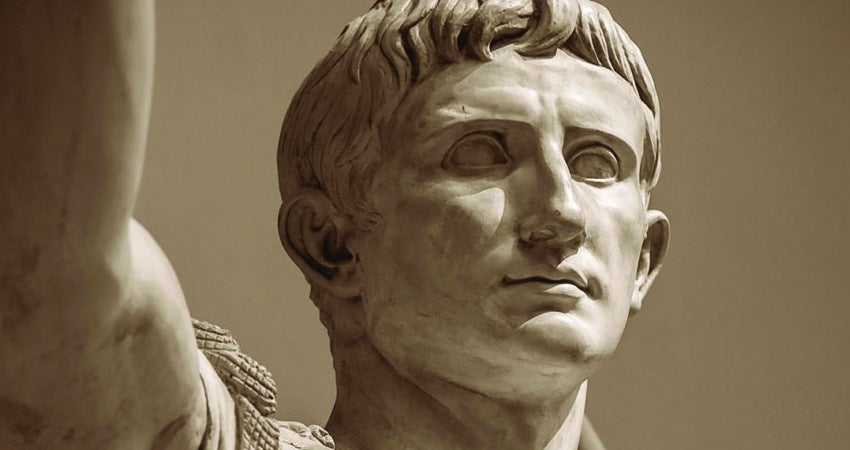
The face of Augustus: the portrait of Octavian
Roberto ZampieriShare
What was the face of Emperor Augustus like?
The statues dedicated to the founder of the Roman Empire and the coins minted in honor of Octavian allow us to reconstruct the face of Augustus. But beyond this, we have the narration of the chronicler Gaius Suetonius Tranquillus, who in his "Lives of the Caesars", describes the face and physical appearance of Augustus.
BUY THE PAINTING WITH THE FACE OF AUGUSTUS
Augustus had generally poor health and often suffered from weakness and fever, which often recurred, especially in his first years of life, so much so that only his willpower allowed him to survive.
According to Suetonius, Augustus was particularly handsome and extremely graceful in features, although he personally did not care much about personal adornment and grooming. His expression, both during normal conversations and when he was silent, appeared calm and gentle.
He had clear, bright eyes . The teeth were widely spaced, small and poorly maintained, while the hair , slightly curly and tending towards golden, was very beautiful. However, Augusto did not take particular care of his hair, so much so that he had several hairdressers shave it and in the meantime he read something or wrote.
His eyebrows met on his forehead , his ears were medium sized, his nose was slightly protruding and curved. The complexion was between brown and white.
He was short in stature, according to his freedman and historiographer Giulio Marato five feet and three quarters, but this characteristic was compensated by the beautiful proportions of his body and the symmetry of his figure. Augustus, in fact, appeared short only in comparison to a person taller than him, standing next to him.
The face of Augustus in statues and sculptures
The image of Augustus' face was represented according to the imperial propaganda he wanted and was treated by Greek and oriental artists, who were the best sculptors of his era.
In their works, the sculptors worked to emphasize his graceful features, trying to give his face an almost divine and supernatural appearance.
In fact, all the busts that portray the face of Augustus, as well as his face minted on his coins, refer to the Italic and Hellenic style.
We know the face of Augustus as a teenager in the works of an anonymous Greek artist, who probably took care of the coins issued after the victory of Actium in 31 BC
In this case, the face has a decisive expression and harder features than in the imperial period. The head is turned slightly to the right, according to the typical portraits of Hellenistic rulers, the hair has large wavy locks, the cheeks are slightly sunken as a demonstration of the physical effort to which he is subjected, the eyes are quite deep-set and the features are sharp.
Instead, the best testimony of the "mature" face of Augustus can be found in the sculpture of Augustus of Prima Porta , which celebrates the emperor in the act of leading the Roman people with symbolic gestures.
The facial construction represents a broad skull and narrow chin , with pointed eyebrows, a slightly aquiline nose , and a rounded mouth . The face was smoothed and idealized according to Greek canons.
Augustus' face has simple features and a forcibly youthful appearance, with the deliberate intent of giving the emperor an essence of eternal youth, even though he was 40 years old at the time the sculpture was created.
The facial expressions represent calm and self-control, demonstrating the emperor's character. His face is similar to that of a Greek athlete, with a distant and imperturbable gaze, to give Augustus the resemblances of a god rather than a human being.
The cut of his hair is significant : the tufts are represented in the shape of a comma with three tips, and have become, over time, the symbol of the Roman emperor's hair, so much so that some statues of subsequent emperors, such as that of Trajan , used the same comma shape of hair to indicate a close relationship with Augustus.

